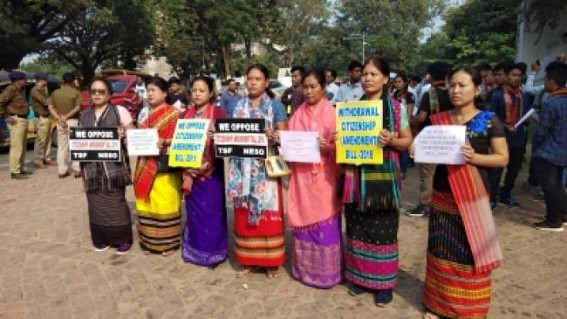TIWN Dec 26, 2019

Agartala, Dec 26 (TIWN) Experts, academicians and professionals of northeast India have diverse views on the pros and cons of the Inner Line Permit (ILP) regulation that regulates movement of outsiders and excludes the ILP-administered areas from the purview of the new Citizenship Amendment Act (CAA).
After violent protests in the northeastern states, local and regional parties including Bharatiya Janata Party''s allies - Meghalaya''s ruling National People''s Party (NPP) and Mizoram''s ruling Mizo National Front (MNF) -- the central government also exempted the Tribal Autonomous District Council (TADC)-governed areas besides the ILP-run areas from the purview of the CAA.
The ILP was in force in Arunachal Pradesh, Nagaland, Mizoram and on December 11 promulgated in Manipur while the Meghalaya Assembly on December 19 cutting across party lines unanimously adopted a resolution requesting the Centre to promulgate the ILP in the mountainous state. The Assembly resolution and the state gazette notification already communicated to the Union Home Ministry and is expected to enforce ILP within two weeks.
Whether the ILP would hamper tourism, trade, investment, free movement of people in five of the seven northeastern states excluding only Assam and Tripura, experts, academicians and professionals are in varied observations and judgment.
Former Vice-Chancellor of Assam University Tapodhir Bhattacharjee said that people of Barak Valley region in southern Assam would be sandwiched and blockaded due to the ILP regime in neighbouring Manipur, Mizoram and Meghalaya.
"To go to Guwahati or other parts of the country by road, people of Barak Valley comprising four million people have to go through Meghalaya territory. It would be very difficult to take ILP every time each people have to pass through Meghalaya state," Bhattacharjee, a former legislator of the Assam assembly, told IANS.
Bhattacharjee''s views were echowed by Assam''s Citizen Rights Protection Committee''s Secretary General Sadhan Purkayastha.
He said: "Hundreds of small traders from southern Assam have to go to neighbouring Mizoram and Manipur for doing business. Hundreds of workers to maintain their livelihood are depended on the Meghalaya coal fields and various types of works in the neighbouring states. These people would be put in a severe awkward position. Experience of ILP regime in Mizoram is not good. For a petite issue local people in Mizoram imposed ''Bhai Curfew'' (unofficial embargo) against the outsiders."
Purkayastha told IANS that future of four million populations of three districts of Barak Valley region in Southern Assam - Cachar, Karimganj and Hailakhandhi - is very uncertain and miserable. The ILP was notified under the Bengal Eastern Frontier Regulation, 1873, to allow inward travel of an Indian citizen into a protected area for a stipulated period.
The CAA will not apply to the ILP and the Tribal Autonomous District Council (TADC) areas. In the four Northeastern states there are 10 TADCs, constituted under the Sixth Schedule of the Constitution. While Assam, Meghalaya and Mizoram have three TADCs each, Tripura has one.
According to Manipur University Professor and political observer Chinglen Maisnam, the ILP is a "pain killer" like measure as we have to wait and watch whether the step would actually protect and promote the life, culture and economy of the indigenous people of the region.
- Strict Regulations Imposed: If you Park in Illegal Spots in Agartala, you might not find your Vehicle
- Fire Rages Through Variety Store in Champamura Market
- 'Intolerable.....' Corporators Lodged FIR against Madhabi Biswas over 'Insane Video' on social media targeting PM & Mayor
- Blood Donation Camp Organized in Sipahijala District
- Yuvrajnagar Panchayat Samiti Chairperson's Husband Denies Molestation Allegations



